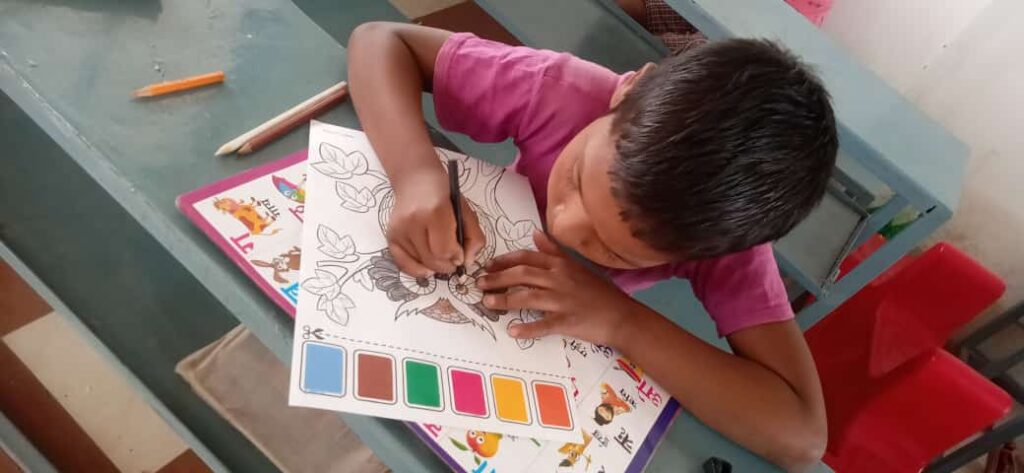About 50 km from Ranchi towards Gumla is a village called Dumbo [Pronounced Doom-bo 🙂].
In 1992, my father purchased some land in the village and built this temple. The temple complex also includes a school (Shankar Vidyapeeth) which had become inoperational during Covid. The school is open again now.
In March 2020, I returned to Calcutta from Bangalore to work from home. The option to work remotely also allows me to spend time in the village to engage in farming activities and initiatives at the school. Now I am staying in the village for a few days every month.
A permanent move to the village might not be possible yet but one of the major deterrents has been partially solved. The village now has much better internet connectivity. Not having a stable internet connection had also been slowing down initiatives that could be undertaken at the school.
Getting Internet
I had been trying to figure out who to approach to get internet connectivity. I even cold-called a few officers in TRAI (got the numbers from the TRAI website) and was connected with some folks who worked for different telecom companies. However, the asks never seemed to get to the right teams.
Finally, Devarchan’s father (extreme right in the picture below) connected me with the Ojha ji who coordinates deployment for Reliance Jio in Jharkhand (2nd from right).
The ask from Jio was to get either a wired-line connection or a network antenna that could augment the network strength in the village. Although this might take time, they were able to fix the alignment of the nearest tower setup (5 km away) to boost connectivity.
At present, the internet speed ranges between 3 to 20 Mbps but is largely dependable. And so, we should be able to start using the internet network to engage the students in learning from sources until now inaccessible.
The School
Since we started the school again in February 2022, 21 students have enrolled back in the school. Although the age ranges from 5 to 13 years, the students are mostly learning uniform topics with some skill-based segmentation corresponding to standards in conventional schooling.

Here is the age, gender and village-wise breakup of the 21 students:
As per the 2011 Census, Gumla has a male literacy rate of 63% and a female literacy rate of 51%. Hopefully, we will be able to contribute toward upping this.
What’s next?
The objective to run this school is largely to inculcate livelihood skills. The next step is to design a curriculum around this objective. At the primary and middle school levels, the focus will be directed toward mastering the following toolkit:
- Base subjects:
- Using the internet
- English
- Hindi
- Logic & Reasoning
- Maths
- Science
- Mindfulness of surroundings & cleanliness.
- Discourage substance abuse.
- Teach basic healthcare and body awareness.
- Life skills such as social-emotional awareness
- Sports
- Arts and crafts
Some of the focus areas aren’t directed directly at livelihood skills but can be enablers for focusing on empathy, mental well-being and cognitive competencies.
Updates
March 2024
Our school has had its ups and downs over the years. At certain points over the last two years, we have had lots of students, up to 40 at once. But other times, we have had to close because there weren’t enough students or teachers.
Lately, we have been closed for a month. And this time, it’s because of something very sad. There’s a new road near our school, and it’s causing accidents. Kids are scared to cross it to get to school. The problem isn’t the road itself. It is the cars driving too fast and not being careful. This has made it dangerous for kids to walk to school. Parents are worried, and kids are too scared to come to class.
This stretch of NH-23 has become more prone to accidents since its widening. Although we cannot be sure of the reason, there has certainly been an uptick in the road accidents we are seeing in the vicinity. In November 2023, Ramraksha ji – panditji from Ayodhya who had spent almost a decade in Dumbo passed away in a road accident. He was crossing the highway when a motorbike ran into him. The motorbike riders were injured as well but survived.
We know education is important. But safety comes first. We will not open our doors until we are sure it is safe for every student to come to school.